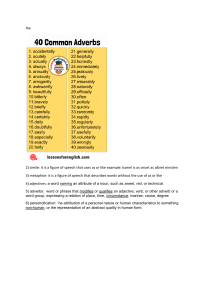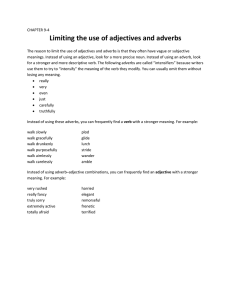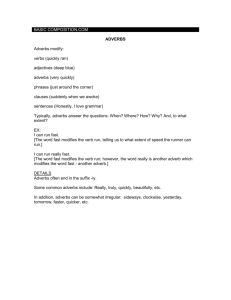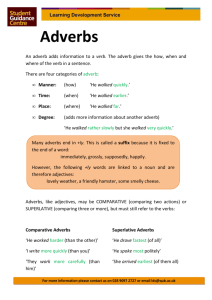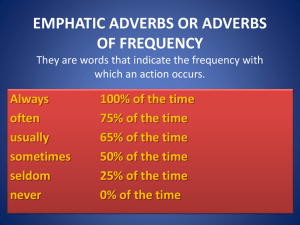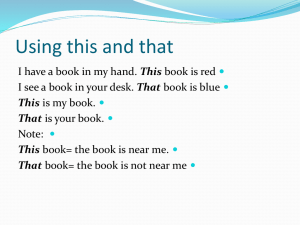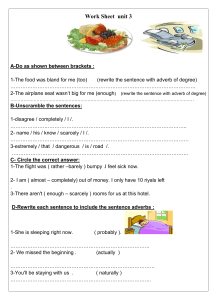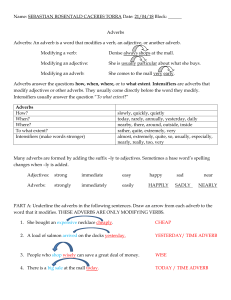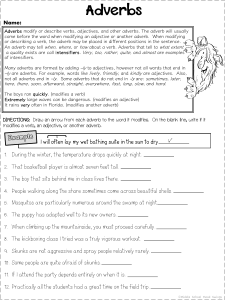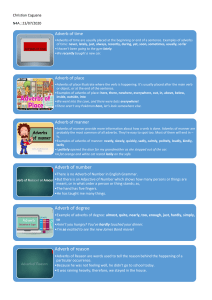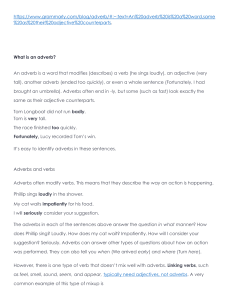Document 17543813
advertisement
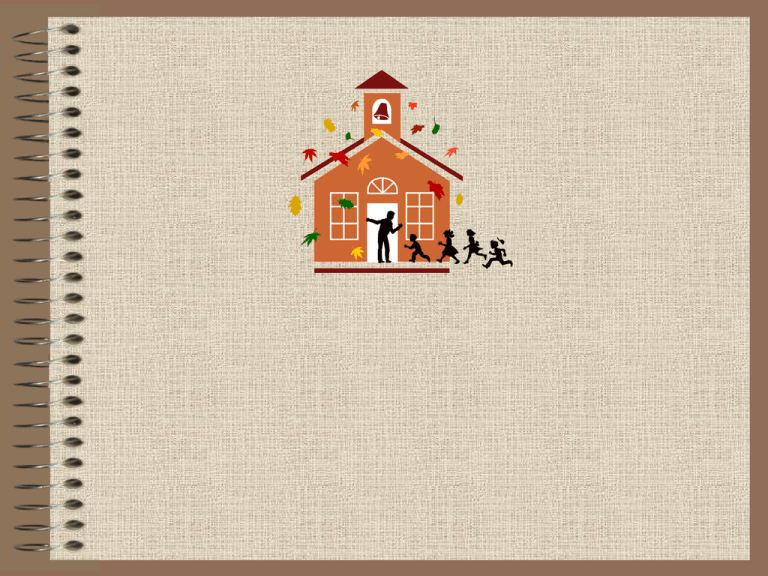
ADJECTIVES & ADVERBS RULES TO FOLLOW ADJECTIVES • Modifies Nouns • Modifies Pronouns DEFINITION OF AN ADJECTIVE: • It tells what kind of person, place, or thing. A noun or a pronoun is. • It may also point out which one or how many. EXAMPLES: • The ship was an English vessel. (what kind) • This factory is mine. (which one) • Many people enjoy the annual dinner. (how many, which one) AN ADVERB: • Modifies an active verb or a verb phrase by expressing manner, place, time, degree, or number. TYPES OF ADVERBS: • Simple • Interrogative • Negative EXAMPLES: • SIMPLE: – She moved quietly. (Manner and tell how) – I waited there for an hour. (Place and tell where) – You may leave soon. (Time, tells when) – I called you once. (Number, tells how many) – He sat very still. (Degree, tells how much) Interrogative Adverb • Introduces a sentence that asks a question • where, when, why and how EXAMPLES: • Interrogative: – When will you return? – How is the trunk being sent? Negative Adverb • Denies or contradicts a statement • no, not , never, only, scarcely and hardly Note: two negative adverbs should not be used together. EXAMPLES: • Negative • - I can scarcely believe my eyes. ( correct) • - I haven’t no more sea shells. (incorrect) Familiar Adverbs to Know • almost finally seldom unusually certainly hardly quite so usually just rather very rather fairly nearly too scarcely well This powerpoint was kindly donated to www.worldofteaching.com http://www.worldofteaching.com is home to over a thousand powerpoints submitted by teachers. This is a completely free site and requires no registration. Please visit and I hope it will help in your teaching.
